1867 Read online
Copyright © 1997 by Christopher Moore Editorial Ltd.
Cloth edition published 1997
Trade paperback edition 1998
All rights reserved. The use of any part of this publication reproduced, transmitted in any form or by any means, electronic, mechanical, photocopying, recording or otherwise, or stored in a retrieval system, without the prior written consent of the publisher – or, in case of photocopying or other reprographic copying, a licence from the Canadian Copyright Licensing Agency – is an infringement of the copyright law.
National Library of Canada Cataloguing in Publication
Moore, Christopher
1867 : how the Fathers made a deal / Christopher Moore.
eISBN: 978-1-55199-483-3
1. Canada–History–Confederation, 1867. 2. Fathers of Confederation. I. Title.
FC474.M66 1997 971.04′9 C97-931484-4
We acknowledge the financial support of the Government of Canada through the Book Publishing Industry Development Program and that of the Government of Ontario through the Ontario Media Development Corporation’s Ontario Book Initiative. We further acknowledge the support of the Canada Council for the Arts and the Ontario Arts Council for our publishing program.
McClelland & Stewart Ltd.
75 Sherbourne Street
Toronto, Ontario
M5A 2P9
www.mcclelland.com
v3.1
“On all great subjects, much remains to be said.”
—Walter Bagehot
CONTENTS
Cover
Title Page
Copyright
Epigraph
Preface: As If Confederation Mattered
Acknowledgements
1. George Brown and Impossibility
2. Charles Tupper Goes to Charlottetown
3. Ned Whelan and Edmund Burke on the Ramparts of Quebec
4. Under the Confederation Windows
5. If Brother André Went to Parliament Hill
6. Leonard Tilley and the Voters
7. The Leadership Secrets of John A. Macdonald
8. Nation and Crown
Postscript: If We Had a Parliamentary Democracy …
Note on Sources
Notes
PREFACE
As If Confederation Mattered
DURING THE collapse of the Meech Lake constitutional accord – a collapse I watched with some regret but with a surprisingly strong blend of contempt and anger – I took up Donald Creighton’s thirty-year-old The Road to Confederation. I had never worked seriously on nineteenth-century political history, and much of Creighton’s story was, frankly, news to me. One detail about the way the deal was made became stuck in my mind. Creighton mentioned in passing that Nova Scotia’s premier, Charles Tupper, was invited to the constitutional conference at Charlottetown in 1864 – and Tupper refused to go unless the leader of the opposition would go with him.
This astonished me. I could not imagine any of today’s imperial first ministers ever considering such a proposal. I could not help wondering what might have happened if they had. But Creighton offered no explanation for Tupper’s odd gesture, and when I asked some of Canada’s leading historians about it, none had any coherent explanation.
As I read further, it began to seem that the nineteenth-century makers of confederation worked with constitutional machinery rather similar to what exists today. Yet actions like Tupper’s suggested they operated the machine differently. George Bernard Shaw once said that English and Americans are divided by a common language, and we have the same problem with our nineteenth-century constitution-makers. I began to wonder if a translation was possible, and if there were comparisons for our time in the processes for constitutional deal-making that the confederation-makers employed in the 1860s. This book is the product of that wondering.
As I tried to grasp the constitutional deal of the 1860s, I grew aware of how deeply unfashionable an exercise it was. If we have had one element of consensus amid our present constitutional wrangles, it lies in the agreement that we are wholly superior to those dead white males, the “fathers” of confederation. We probably know that John A. Macdonald was witty and a drunk, but we are unlikely to think his ideas on constitution-making have anything to do with us. “When the boys went down to Charlottetown,” said Brian Mulroney disdainfully in 1990, “they spent a lot of time in places other than the library. There was no public participation.” “The constitution of Canada must be a modern document,” began one of Pierre Elliott Trudeau’s constitutional proposals, with all the confidence of a platitude, as if our modern industriousness enables us to dismiss tradition and change our constitutions like hemlines.
Our experts take the same view. Peter H. Russell, to take one of the most accomplished of our political scientists, is massively learned in constitutional law and has been deeply involved in the recent decades of constitutional struggle. In the historical sketch with which this wise and humane observer of our national difficulties opens his book Constitutional Odyssey – its revealing subtitle is Can Canadians Become a Sovereign People? – Professor Russell allows only that the constitution-makers of the 1860s did not act “in a totally undemocratic matter,” before dismissing their beliefs and processes out of hand. His book, which is indeed hugely informed and deeply thought-out, proceeds on the understanding that our inheritance from 1867 is worthless, that we are compelled to begin afresh to become what we have never been.
Professor Russell gets no argument from our historians. In the years before the Centennial celebrations of 1967, Canada’s leading historians filled a shelf with books about confederation. And then they stopped. In the last thirty years, there has scarcely been a single new book about how confederation was made in the 1860s. Nineteenth-century high politics has vanished almost entirely from the agenda of the Canadian historical profession and the historical popularizers. The books are out of print, the documents almost unavailable, and the issues undebated. The historians of thirty and forty years ago became supremely unfashionable, and no one has begun to take a fresh look at their subjects.
Meanwhile, all the questions about constitution-making have changed. On the eve of the Centennial, there was inevitably a triumphal and celebratory mood in even the most scholarly treatises. Confederation had endured, and Donald Creighton read out the lesson: The fathers had decreed that a tightly centralized Canada was both the right answer and the inevitable one. Evidence to the contrary hardly seemed worth examining, and minor issues of just who had been in the room could be neglected. Today, when we have no such confidence about confederation, we find that the histories of the 1960s do not address the issues that seem most important.
The more I looked into the histories of confederation that languished on the shelf, the more contemporary analogies I wanted to pursue. I wanted to explore Charles Tupper’s odd stance in 1864 – and what might have happened if contemporary premiers had responded similarly when invited to Meech Lake in 1987. I found myself comparing today’s assumptions about leadership against the tactics that worked for John A. Macdonald. What did it imply for our pursuit of unanimity that about one in four of the men honoured as the “fathers of confederation” dissented from the confederation proposals of 1864 – or that four of their five legislatures at first refused to ratify a deal endorsed by premiers and opposition leaders alike? What did Hector Langevin, arguing in favour of the confederation settlement, mean when he declared that French Canadians were a separate people? Reading such questions into the 1860s, I found myself trying to take seriously the way their constitutional deal was made, and made to seem legitimate – not because they had all the answers, but because they help us to think differently about the way these matters are attempted today.
This book does not presume that the
makers of confederation were heroes. Even on the discreet testimony of the triumphal histories and biographies, some seem to have been quite appalling human beings. Some of their strongest shared beliefs – that women must not vote, to cite only one – have no place in our world. Many of the accommodations they made to the circumstances of the 1860s need neither be justified nor imitated today.
Still, the political world of the citizens of the 1860s was not a separate universe from ours. In the midst of our repeated constitutional failures, we should not be so quick to condescend to their successes. Amidst the endless efforts to strike a constitutional “deal” that would become legitimate and lasting, I thought it might be worthwhile to interrogate the deal-makers of the 1860s about the deal-making processes that seemed to work then.
Considering historical analogies for present circumstances went against my habits as an historian. I have constantly preferred history’s potential to offer examples of how gloriously foreign the past is, rather than to present didactic lessons. Nevertheless, the 1860s experience with constitution-making might enlighten us on several points:
• Constitution-making is divisive.
The constitution-makers of the 1860s seem to have accepted that unanimity was not to be expected and disagreement had to be allowed for.
• Representative democracy has its uses.
Much more than our counterparts of the 1860s, we have made access to voting nearly universal. They, however, were much more aware that a voting population is represented in legislatures, not in any particular first minister or party leader. Constitution-making in the 1860s was ultimately a legislative, rather than an executive, responsibility, and could not have succeeded otherwise.
• All legitimate political opinion deserves a place at the table.
In the 1860s, government members and opposition members took each other “not by the hand but by the throat,” (as the historian Ged Martin put it) and accepted each other’s presence in constitution-making as essential. The practicality of this continues to elude our leaders.
• Constitution-making takes time.
In the 1860s, for a union of just five small provinces and three and a half million people, thirty-six parliamentary delegates from several rival parties spent about seven weeks in face-to-face negotiating sessions spread over three conferences and two years. Even then, they would have done better to take longer and include more delegates.
This book considers how these lessons took hold in the politics of the 1860s. It is not by any means a complete account of confederation. Because I was interested mostly in the process by which a deal was made, and made to seem legitimate, I neglected a host of conditions specific to the 1860s: railway economics, the American civil war, tariffs and taxes, rivalries of region and class and religion, to name just a few. All these were vital in their time, but it was the processes of deal-making I was trying to follow.
Process mattered to me as an observer of Canada’s seemingly endless struggles to reach and ratify a new constitutional deal. After twenty-five years of unsuccessful wrangles, I took for granted that a legitimate process was what was lacking. In his book Meech Lake: The Inside Story, Professor Patrick Monahan has argued otherwise, insisting that complaints about “process” were merely a “rallying cry for those who objected to Meech for other reasons.” As an unelected adviser, Professor Monahan was virtually “in the room” at Meech Lake, and I claim none of his expertise about the content of that accord. But this book grew out of the sense that how the deals were made was far and away the most important obstacle to successful and persuasive constitutional reform in Canada in the 1980s and 1990s; indeed, that if there were a legitimate process, it might be possible to make and ratify a constitution.
It was on questions of that sort that the experience of the original confederation-makers seemed worth re-examining. This book is a reading of some political history as if confederation mattered.
ACKNOWLEDGEMENTS
I gratefully acknowledge the support of the Ontario Arts Council through a Work-in-Progress grant awarded to this work.
I would also like to thank executive producer Bernie Lucht and producers Alison Moss and Jill Eisen of CBC-Radio’s “Ideas,” where some of these ideas germinated. Alec Fiorentino and Ivan Chorney of Excelsior Collectors Guild in Ottawa helped turn my interest to the makers of confederation. Christopher Dafoe of The Beaver: Exploring Canada’s History solicited an article on the subject. Beth MacAulay and Kristopher Churchill assisted me with research at different stages.
I hold that a writer ought to be able to leave work on the desk and lead a normal life outside working hours, but this book sometimes impinged on that schedule. I am deeply grateful to my wife, Louise Brophy, and my children, Elizabeth and Kate, for their tolerance in this and their support in so many other ways.
CHAPTER ONE
George Brown and Impossibility
IN THE 1860s, western alienation began at Yonge Street, and George Brown was the Preston Manning of the day.
In the 1860s George Brown led a feisty, crusading regional party named Reform, and he expressed grievances that were more than regional. Like their late-twentieth-century counterparts, Brown’s reformers wanted to change political life in Canada. Stubbornly, a perpetual minority, they insisted on their own particular program. They persisted even though the political establishment agreed that adopting reform’s principles would shatter the compromises on which the fragile national consensus depended. Brown’s ideas, said the men of the political centre, were fanatical and bigoted. They would sow dissension among the founding peoples and divide the regions one from another. Pushed to their logical consequences, they would destroy the union. For the sake of unity, there could be no place for George Brown or his radical ideas in the governing of the country.
The longer Brown was excluded from the ruling consensus, the more fiercely his regional supporters backed him. His faction grew stronger in what was then the West. He was marginal, prickly, alienated, and his only moment of power had been a fiasco – and yet he held a kind of veto over political development in the country. By the 1860s, George Brown was the impossible man. A “governmental impossibility,” one of his former allies, now estranged, had called him, and his enemies took it up like a chant. But Brown could make government by his rivals nearly impossible, too. They could barely keep him out, but they couldn’t imagine letting him in, either.
From this awkward position, George Brown became one of the architects of the most successful round of constitutional negotiations ever held in this country. He did it in partnership with men whom he hated and who despised him. And he did it on the policy of federalism, which seemed almost as much an impossibility as he was. The idea of a federal union of all of Britain’s North American colonies had been around forever. Politicians of every stripe had trotted it out again and again, and they had never moved it one inch toward reality. When Brown began to promote federalism in 1859, even his supporters took it for a diversionary tactic more than a declaration of principle. As the 1860s began, constitutional change seemed simply not feasible.
Blockages, deadlocks, impossibilities – familiar aspects of late-twentieth-century Canadian politics – were the very stuff of political life in British North America in the years before confederation. George Brown, both a headstrong cause and a frustrated victim of the great political deadlocks of the mid-nineteenth century, is worth considering for more than merely antiquarian reasons. Fortunately, we have the means to consider his experience; a century after his immersion into impossibility, George Brown had the happy fate of becoming the subject of one of the most readable, engrossing histories written in Canada, J. M. S. Careless’s remarkable biography Brown of the Globe.1
Encountered as a labelled spine on the library shelf, “Careless Brown of the Globe” may produce only a joke and a turning away. The two thick volumes, now more than thirty years old, seem to promise another respectful tombstone biography of another Victorian worthy, the kind of history boo
k that is saluted more than read – and not even saluted very often. As the masterwork of a skilled historian inspired to a peak performance by the right subject, they deserve better. Sadly, however, they now need the same defence Careless once gave Brown himself. In his preface, Careless laments that George Brown “is generally envisaged among the ‘fathers’ of confederation as a stern, white-headed Old Testament patriarch – instead of the vigorous, exuberant man of forty-five that he was at the time.” Brown, urges Careless, “deserves rescuing from the indifference and near-ignorance that Canadians so often display about their past.”
So indeed do confederation and all its makers, for Brown is hardly unique. Except for John A. Macdonald, who everyone knows was a drunk, the men whom we call the fathers of confederation blur together, a single stultifying mass of white-haired patriarchy. The confederation they made seems boring because it seems irrelevant, and it seems irrelevant because it seems to have been so easy, indeed inevitable. Professor Russell speaks for a consensus when he gives us a group that was like-minded in its ruling assumptions, unanimous in its agreements, and unencumbered by the constraints of democracy. So it is useful to rediscover that Canadian politics in the 1860s was as full of hatreds, conflicts, suspicions, and impossibilities as it was in the late twentieth. George Brown is a wonderful guide to all those conflicts and obstacles, and he even offers a clue as to how to overcome them.
Careless’s vigorous, exuberant man in his forties was already a political veteran in the 1860s – he had held a seat in the colonial assembly since 1851. He was also influential and becoming wealthy. As the editor and publisher of the most important newspaper in British North America, the Globe, he made his opinions heard throughout the colonies. Most people who heard them might have agreed with Careless’s “vigorous” and “exuberant,” but they used other terms too: hothead, smasher, extremist, bigot.

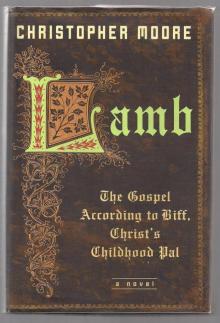 Lamb: The Gospel According to Biff, Christs Childhood Pal
Lamb: The Gospel According to Biff, Christs Childhood Pal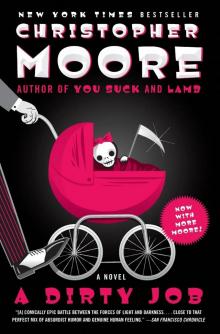 A Dirty Job
A Dirty Job Sacré Bleu
Sacré Bleu Bite Me: A Love Story
Bite Me: A Love Story You Suck: A Love Story
You Suck: A Love Story Bloodsucking Fiends: A Love Story
Bloodsucking Fiends: A Love Story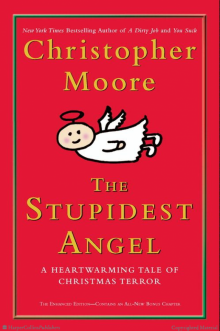 The Stupidest Angel
The Stupidest Angel Coyote Blue
Coyote Blue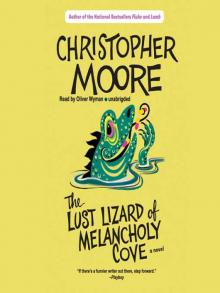 The Lust Lizard of Melancholy Cove
The Lust Lizard of Melancholy Cove Secondhand Souls
Secondhand Souls Shakespeare for Squirrels
Shakespeare for Squirrels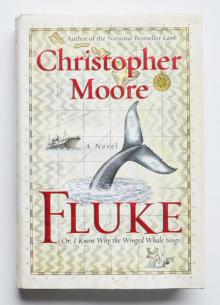 Fluke, or, I Know Why the Winged Whale Sings
Fluke, or, I Know Why the Winged Whale Sings Island of the Sequined Love Nun
Island of the Sequined Love Nun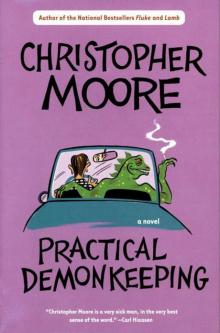 Practical Demonkeeping
Practical Demonkeeping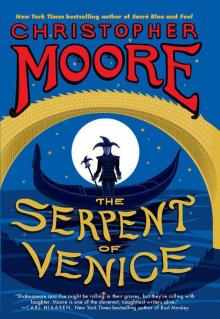 The Serpent of Venice
The Serpent of Venice Noir
Noir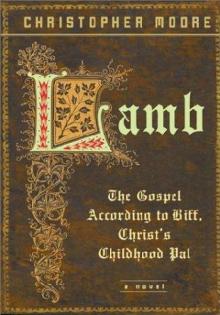 Lamb: The Gospel According to Biff, Christ’s Childhood Pal
Lamb: The Gospel According to Biff, Christ’s Childhood Pal Bite Me
Bite Me Bloodsucking Fiends
Bloodsucking Fiends You Suck ls-2
You Suck ls-2 Bloodsucking Fiends ls-1
Bloodsucking Fiends ls-1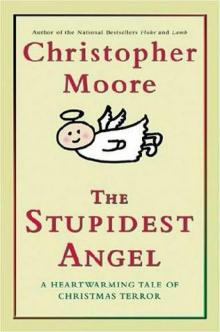 The Stupidest Angel: A Heartwarming Tale of Christmas Terror
The Stupidest Angel: A Heartwarming Tale of Christmas Terror The Lust Lizard of Melancholy Cove pc-2
The Lust Lizard of Melancholy Cove pc-2 You Suck
You Suck Sacre Bleu: A Comedy d'Art
Sacre Bleu: A Comedy d'Art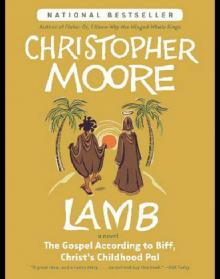 Lamb
Lamb 1867
1867 Bite Me ls-3
Bite Me ls-3 Practical Demonkeeping pc-1
Practical Demonkeeping pc-1